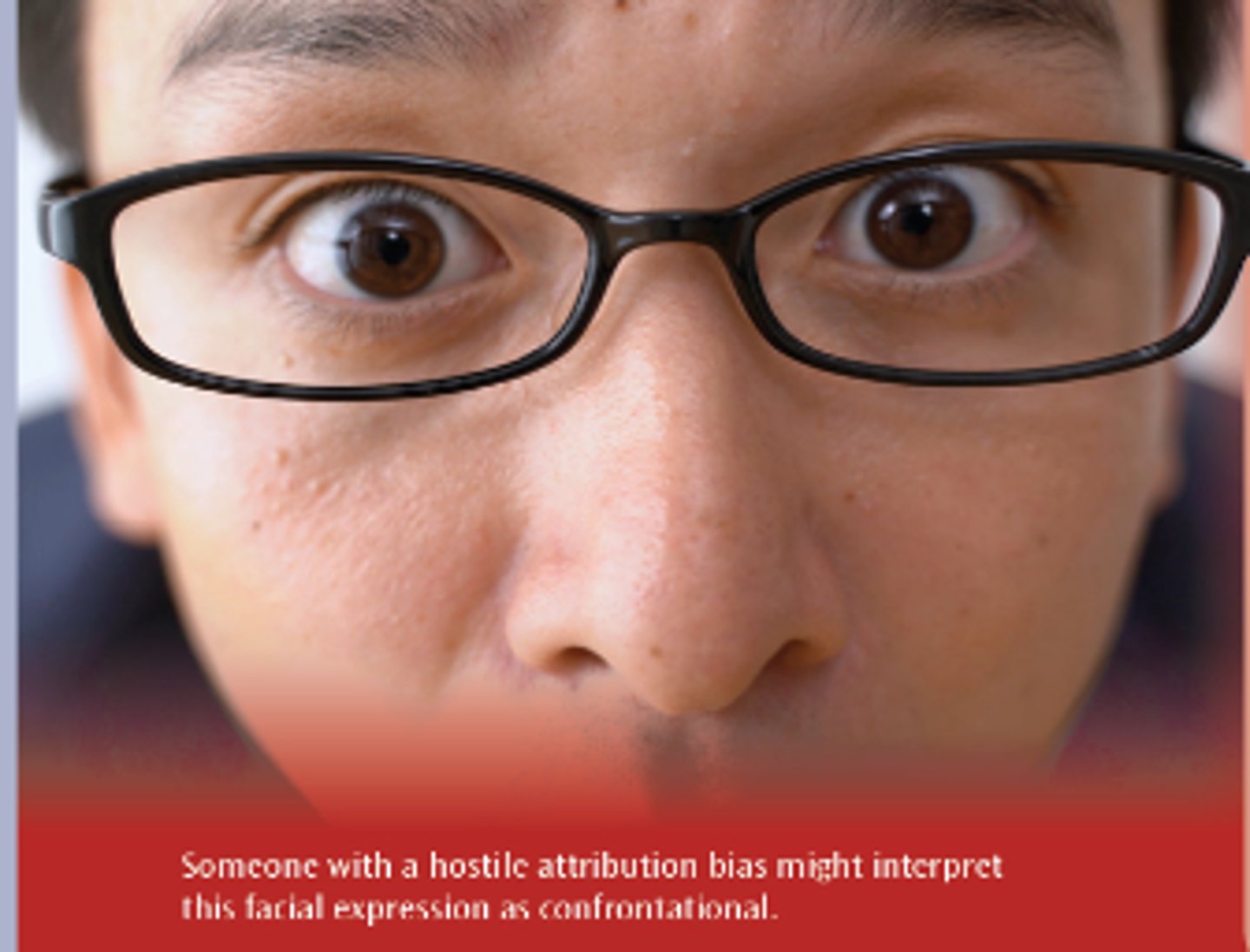FOR 08: Cognitive distortions
1/4
There's no tags or description
Looks like no tags are added yet.
Name | Mastery | Learn | Test | Matching | Spaced |
|---|
No study sessions yet.
5 Terms
Explain what is meant by hostile attribution bias, using an example to illustrate how it may be involved in rationalising / justifying criminal behaviour (4)
* Judging situations as aggressive and/or threatening...
* ...when in reality they may not be
* e.g., may misinterpret being looked at as inviting confrontation...
* ... and act disproportionately in return - i.e. respond with violence

Explain what Schönenberg and Justye's (2014) research showed about hostile attribution bias (3)
* Found violent offenders were more likely than non-offenders to perceive ambiguous facial expressions...
* ...as angry and hostile.
* Offenders misread non-aggressive cues.
Explain what is meant by minimalisation, using an example to illustrate how it may be involved in rationalising / justifying criminal behaviour (3)
* Downplaying the significance of an event or emotion...
* ...as a means of dealing with guilt
* e.g., a burglar who justifies their actions as 'providing for their family'...
* ... or a child molester who says 'I was just being affectionate'.
Identify two results from Barbaree's (1991) research on minimalisation in imprisoned rapists
* 54% denied committing the crime
* A further 40 % minimised harm caused
Explain applications of research into cognitive distortions (3)
* Understanding cognitive distortions helps treat criminal behaviour, e.g.
* CBT helps offenders to 'face up' to their behaviour with a less distorted view of their actions.
* Acceptance of one's crimes is a key feature of anger management.